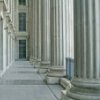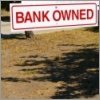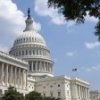Month: April 2010
Three Tips for Avoiding Liquor Liability at Community Events

Summer is approaching and your association may be planning some sort of community-building events, such as pool parties or cookouts with plenty of food and drink. Often at these events, an association will serve alcohol. The association knows that more members will attend an event that provides alcoholic beverages than they would for a “dry” event.
Federal Agencies Recommend Gutting of Homes with Tainted Drywall

Homes with tainted Chinese drywall should be stripped down to the studs, according to a recent recommendation from two federal agencies, the Department of Housing and Urban Development (HUD) and the Consumer Product Safety Commission (CPSC). In a joint statement, the agencies stated that the corroded electrical wiring, outlets, circuit breakers, fire alarm systems, carbon monoxide alarms, fire sprinklers, gas pipes, and other systems should also be removed.
Association Must Process Foreclosures Through the Courts
Facts: A member sued her association for wrongful foreclosure. Beginning in January 2007, the member stopped paying her monthly assessment. In August of that year, after giving the member notice of default, the association conducted a nonjudicial foreclosure on her condominium and then sold the property.
N.Y. Banks Required to Maintain Foreclosed Homes

A new law has taken effect in New York State that aims at protecting repossessed homes from becoming eyesores by requiring banks to maintain the properties during the foreclosure process, but before they legally own the homes.
Permission for Unit Addition Can Be Granted Without Amending Governing Documents
Facts: A condominium community's units were developed in several different styles. Some were built with two stories and others with one. Over time, several owners asked the board for permission to build second-story additions to their one-story units, and the board liberally granted permission.
New EPA Rule Requires More Care Around Lead Paint

On April 22, 2010, a new federal Environmental Protection Agency (EPA) lead-based paint rule called “The Renovation, Repair, and Painting Rule” took effect. The new rule requires managers and associations to follow lead safe work practices when disturbing a painted surface in pre-1978 housing and child-occupied facilities. Disturbances can occur when painted surfaces are sanded, demolished, renovated, or repaired.
